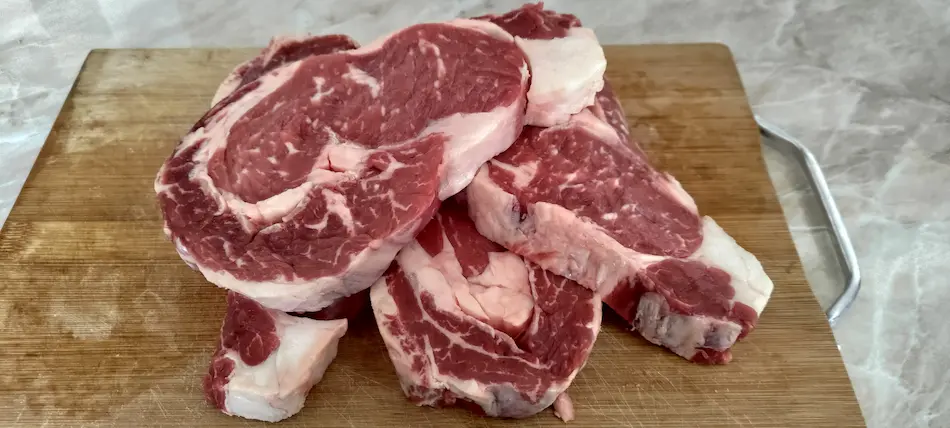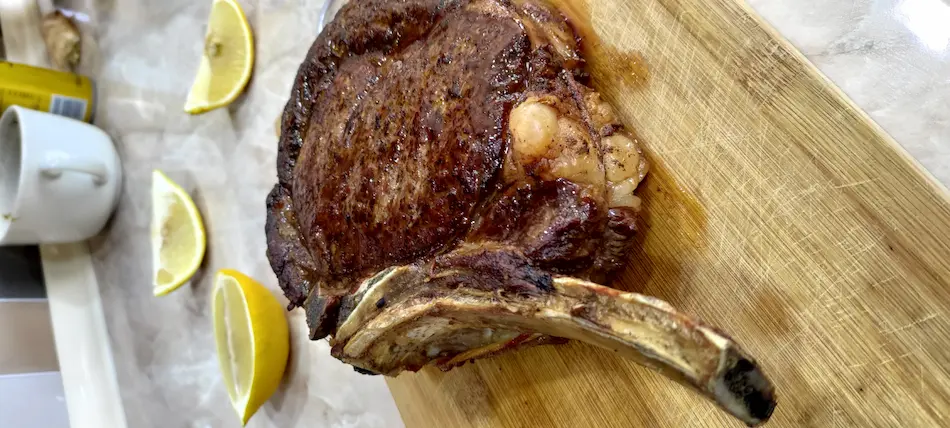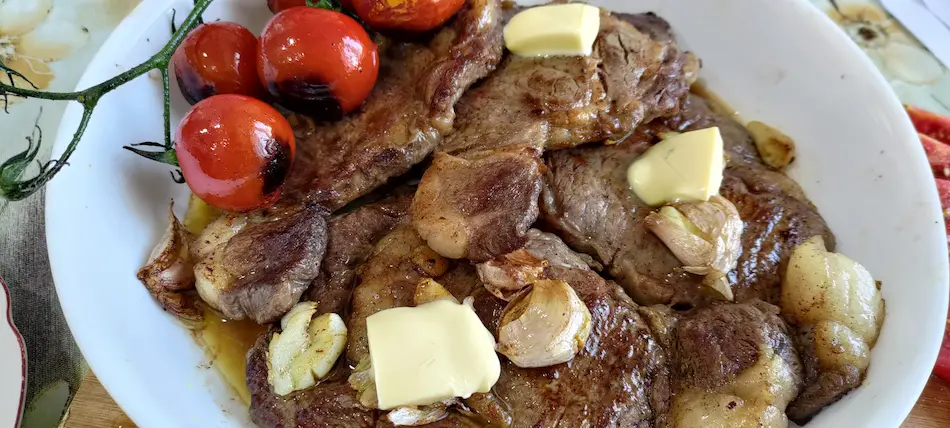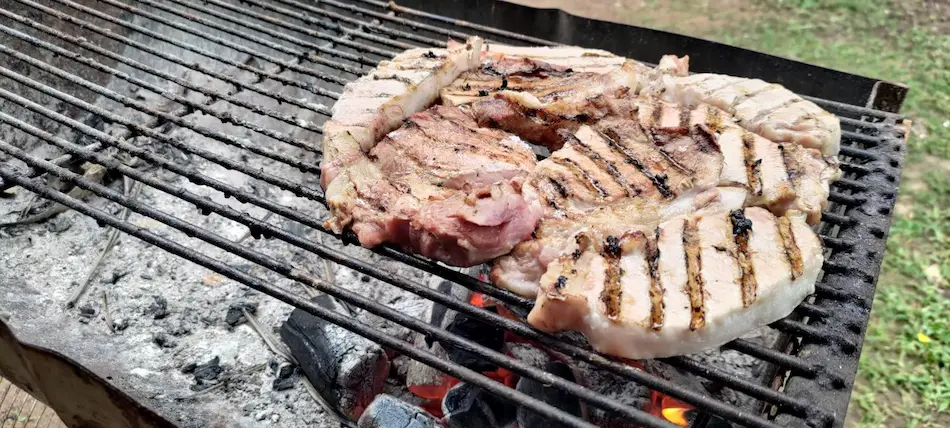I’ve been doing intermittent fasting for over a year, particularly the OMAD diet. In the past, I’ve also tried a Ketogenic diet, where I would eliminate carbohydrates and eat mainly fats and proteins.
In this article, I will share my personal experience of living the ketogenic and intermittent fasting lifestyle and clarify, which one worked best for me.

What is OMAD?
One meal a day diet is an intermittent fasting approach to eating all of your day’s calories in one sitting as either dinner or breakfast for 1-2 hours.
I usually have my OMAD meal around the evening, becasue it helps to maintain my energy levels. Morning meals are not for me, as I often feel tired and cannot focus later in the day.
Unlike other diets, one meal a day doesn’t require any restrictions from specific food groups or macros.
What is Ketogenic Diet?
The ketogenic diet is a high-fat, low-carbohydrate diet that has been shown to be effective in the treatment of epilepsy. The diet works by forcing the body to burn fat for energy, rather than carbohydrates, thanks to ketosis.
To get (and stay) in ketosis, I had to eat a very limited number of carbs (usually no more than 50 grams per day) and a high number of fat-rich meals (avocados, cheese, meats, etc.)
The macros for Ketogenic Diet look like this:
- Fat – 65-90%
- Protein – 10-30%
- Carbohydrates – around 5%
Benefits that I’ve experienced with eating one meal a day
- Weight loss
- Save time and money
- I can eat what I want
I lost over 30 lbs practicing the OMAD lifestyle
Although I tried many intermittent fasting diets before, by eating one meal a day I managed to drop a lot of weight, without putting it back on.
Within 3 months, I went from 219lbs to 187lbs! In the beginning, it was difficult to not eat for almost 23 hours, but after a couple of weeks, my stomach felt more full after eating less food.
My wife says that I look better and I do feel like I’m at a weight that’s healthy for my body. I have more energy and I don’t struggle anymore with my outdoor running.
It saved me time
I don’t like cooking and don’t want to think about food, so eating one meal a day saves me plenty of time.
Instead of shopping for groceries every day, or doing food prep every other day, I can use that time for work or hanging out with my wife.
Eating one meal a day also saves me money. Today my grocery bill is literally half of what it was before I was fasting.
Eating what I want
With intermittent fasting, I was able to enjoy the foods I love, without feeling guilty.
Here’s a photo of my ‘starter’ dish that includes freshly baked bread, and pate made of cream cheese, spring onions, and quark.

I often have this before my main meal.
Although there are no rules or restrictions on OMAD, I still plan my meals in advance to ensure I have enough protein and veggies.
Here’s a photo of how I like to prepare my proteins for OMAD meals.

My point is that with one meal a day I can eat carbs, sweets, and other tasty foods that I would normally avoid on other diets. Instead of counting calories or carbs for each meal, I eat until I’m satisfied and not stuffed.
Disadvantages of OMAD
I wokrout almost every day but with OMAD I have a hard time gaining muscle. With one meal a day, I feel like I’m not getting enough protein and it’s hard to improve with my strength.
Hunger is not the problem, but I don’t want to be this guy who is lean, but skinny. Instead, I prefer to have more muscle and I don’t mind having a small belly.
Another disadvantage of doing the OMAD diet is my social life. Most of my friends don’t have a healthy lifestyle. (Heck, some of them don’t even lift!)
They often come around and snack during the day. For me, hunger is not a problem, as long as I keep the food away from me. However, once I see people snacking, it makes me wanna break the rules.
Benefits that I’ve experienced with Ketogenic Diet
- Support weight loss
- Eating high-fatty meals
Weight loss
I started the ketogenic diet after reading the book “Adapt Program: A Low Carbohydrate, Ketogenic Diet Manual” written by a low-carb expert, Eric Westman, MD.
At this time, this was one of the most popular weight loss plans around. Although I didn’t get jaw-dropping results (my weight went down from 202lbs to 190lbs) I know heaps of people who do see significant weight loss within the first 6 months of doing this plan.
Eating high-fatty meals
On keto, I was eating 3-4 times per day, without worrying about calories.
Here’s a photo of my all-time favorite dry-aged steak that I got for the weekend.

Most of my meals were high in protein and fat with occasional seafood or streaks when we had some extra time on our hands over the weekend.
When it comes to weekends, my grill was ON for most of the day. It didn’t feel like dieting, but rather like a lifestyle.
Here’s a photo of how I used to spend my weekends cooking Keto meals for myself and my wife.

Disadvantages of the Ketogenic Diet
As much as I enjoy meats and fatty foods, I was eating way too much food. My scale didn’t move once I reached 190 lbs.
For my wife, eating out was the biggest problem. Scrolling through the websites, online forums, and Reddit threads to find keto-friendly restaurants wasn’t ideal. I got sick from looking at the nice Italian food pictures just to realize that I cannot have this or that.
Another disadvantage of the Ketogenic Diet is the price. A ketogenic diet ain’t cheap. Eating mostly fatty foods, meats, cheese, and avocados cost me a fortune.
In 2017, we had to pay around $7.70 for 1 lb of sirloin steak. In 30 days, I was spending close to $300 for me and my wife JUST ON MEAT.
Right now, 1 lb of sirloin steak can cost you on average $12.40, according to Fred Economic Data. (I don’t think I would be able to afford Keto right now.)
Lastly, on Keto, I couldn’t eat what I wanted. You couldn’t enjoy my favorite dessert, delicious pasta dishes, or Ben and Jerry’s ice cream.
What is more effective?
After trying both the OMAD diet and Ketogenic Diet, I choose one meal a day. I find it more practical, simpler to do, and definitively more affordable. In OMAD, I only eat one dinner per day, but I’m allowed to eat what I want.
Plus, I don’t see many rules in the OMAD diet, which makes it more sustainable. For me, more sustainable means better results.
After years of trying different diets, I came to the point that any diet works as long as you can do it for a long time.
Although both OMAD and Keto are effective and proven to reduce excess body weight, for me doesn’t matter what works ‘better’ as much as what you can do in the long term, consistently.
OMAD and Ketogenic Diet together
The OMAD keto diet is a combination of a Ketogenic Diet (eating around 70% of calories from fat) and intermittent fasting, one meal a day method (eating only once every 23h).
Here’s a photo of how I prepare one meal a day that is keto-friendly.

It includes pork loin chunks, baked garlic, butter, and grilled tomatoes. On the side, I have a salad made of avocados, beans, and broccoli.
A well-formulated ketogenic diet does not appear to have major safety concerns for the general population as a mechanism to reduce weight and improve health, according to an article published in The Journal of Nutrition.
When combined with intermittent fasting, it can result in even more impressive results. So if you enjoy the Ketogenic Diet lifestyle, you can certainly experiment with one meal a day.
Does Keto OMAD work?
My concern is this may not be sustainable, as eating a very low-carbohydrate, and high-fat diet only for one meal can in insufficient in certain vitamins and minerals.
“Long-term adherence to Ketogenic Diet is a major challenge and that is why this type of diet is considered non-sustainable,” says resident physician at the Orange Park Medical Center, Jennifer T. Batch, M.D.
The biggest limitation is evaluating Ketogenic Diet in the long term is attributed to small sample sizes, short duration of interventions, and high participant dropout rates,” explains Dr. Batch.
In other words, the Keto Diet may be effective for short weight loss results, but, according to experts, it is not sustainable in the long term.
What I eat on the Keto OMAD diet
When choosing foods on the keto OMAD diet, it’s important to focus on what are (obviously) low in carbs and high in fat but are also tasty and easy to cook.
The proportions of fat should stay the same (around 70%), but the volume should be higher. Remember, you’re eating your all-day worth of calories in one meal.
Some great keto-friendly foods include fatty fish like salmon, grass-fed beef, avocados, eggs, and full-fat dairy products.
Meat and Poultry
Meat and poultry are excellent sources of protein and fat, making them ideal for the keto OMAD diet.
Here’s a photo of what my typical keto OMAD meat portion size looks like.

Look for options that are grass-fed, organic, and free-range whenever possible.
Fish and Seafood
Fish and seafood are also great sources of protein and fat. (I don’t bother about choosing wild-caught.)
Here’s a photo of my seafood dish from a local restaurant.

When I dine out, I also like to have a glass of white wine with my fish.
Low-Carb Vegetables
Vegetables are an important part of the keto OMAD diet, but you’ll want to focus on low-carb options. I recommend veggies like leafy greens, cruciferous vegetables, and mushrooms.
High-Fat Dairy
Dairy products can be a part of the keto OMAD diet, although try chooses options high in fat, such as butter, cream, and full-fat cheese.
Nuts and Seeds
I love nuts as they are a great source of healthy fats. Just be sure to choose options that are unsalted and unroasted.
How to start the OMAD Keto diet
Before you start the keto OMAD diet, there are a few things you should know.
Organize your kitchen
The keto OMAD diet involves reducing your intake of carbohydrates and replacing them with healthy fats. This means you should make a healthy kitchen makeover, throw or hide unwanted foods, and fill up foods that are keto-friendly.
Calculate your macros
Calculating your “macros” means the number of carbohydrates, protein, and fat you should eat each day. The formula is 70% fats, 20% protein, and 10% carbs.
Once you have your macros calculated, start to make changes to your diet.
Get keto-friendly supplements
Make sure you have all of the necessary supplies on your hands, such as keto-friendly foods and supplements.
Here’s a photo of my protein powder that has 1.6 grams of carbs per serving.

I also recommend getting multivitamins, electrolytes, and omega-3 fatty acids.
Electrolytes, such as sodium and potassium, are important for preventing side effects such as cramping and headaches.
Avoid common mistakes
Ensure you’re getting enough fat in your diet, stay hydrated, and drink enough water. Also, remember this process takes time so don’t give up too soon.
It often takes several weeks for people to adapt to the keto diet and a few months to see results.
My thoughts
If I were to choose between keto and OMAD, I would definitively choose OMAD. For me, it’s easier, less stressful, and more sustainable in the long term.
Plus, one recently published study found that people who followed a one-meal-a-day plan lost more than twice as much fat as those who ate three meals per day.
